Maisan Hwaeomgul Cave (마이산 화엄굴)
.0M 2025-01-10
367, Maisannam-ro, Jinan-gun, Jeonbuk-do
+82-63-430-8751
Maisan Mountain has two major peaks made of sedimentary rocks; these peaks are said to be ‘couple peaks’ and cannot be found anywhere else. Sut Maibong (alt. 667 meters) is said to be the male peak while the slightly larger Am Maibong (alt. 673 meters) is deemed the female peak. In the early Joseon period the mountain was named ‘Sokgeumsan,’ but began to be called ‘Maisan’ after the 12th year of King Taejong, who commented that the two peaks resembled horse ears (‘maisan’ meaning ‘horse ears’). All along Maisan Mountain, visitors will find small crater-like rock cavities that are formed by prolonged weathering. These unique geological features, called ‘tafoni,’ are of great academic value.
Inside Hwaeomgul Cave, visitors can observe medicinal water that flows up from underground all throughout the year. It is widely believed that once you drink the water, especially on the days of the Spring and Autumn Equinox, you will soon have a son and be blessed by the mountain spirit. Even today, many women who have difficulty conceiving visit the mountain to pray to the mountain spirits for their heart’s desire—the gift of a child. The region in which Maisan is located is the birthplace of many talented people and national heroes, which some say is proof of the blessings of the mountain and its extremely powerful spirit.
Maisan Mountain Tafoni Terrain (마이산 타포니지형)
.0M 2024-04-07
255 Maisan-ro, Jinan-eup, Jinan-gun, Jeonbuk-do
Tafoni terrain refer to clusters of small caves resembling bombarded peaks. On the southern slope of Ammaibong Peak in Maisan Mountain, various-shaped honeycomb caves are widely spread out. These formations are believed to have been formed during the 4th Ice Age and subsequently shaped by frost action. Such caves are commonly found along coastlines.
Eunsusa Temple (은수사)
160.6M 2024-04-07
406, Maisannam-ro, Jinan-gun, Jeonbuk-do
+82-63-433-2502
The temple located upon Maisan Mountain was called Sangwonsa Temple during the early Joseon dynasty and was later known as Jeongmyeongam Hermitage. According to the Korean Language Society, the temple began to be called Eunsusa (meaning ‘Silver Water Temple’) after King Taejo (the founder of the Joseon dynasty) visited the temple and remarked that the water flowing nearby was as clean and smooth as pure silver.
The temple is home to the largest known Beopgo (Buddhist drum used for rituals), which was produced in 1982. A stone sculpture and a statue of Granny Samsin (a goddess that looks after babies’ births and keeps them healthy) also stand at the temple. However, the temple’s most treasured assets are its two Natural Monuments: Emerald Gaiety (a climbing vine, Natural Monument No. 380) and the Cheongsil Pear Tree (Natural Monument No. 386). Reverse icicles, though found all over the mountainsides, are most readily and abundantly found in the Eunsusa Temple area.
Tapsa Temple (마이산 탑사)
184.4M 2025-01-08
367, Maisannam-ro, Maryeong-myeon, Jinan-gun, Jeonbuk-do
+82-63-433-0012
Tapsa Temple is famous for its over 80 stone pagodas. Each pagoda has a name, meaning and role. The pagodas are made of natural stone. They range in x_height from 1 meter to 13.5 meters and in shape from conical to straight. Two twin pagodas behind Daeungjeonhall are the tallest, standing three times the x_height of an average adult.
Maisan Provincial Park (마이산도립공원)
785.5M 2024-04-07
126-3, Danyang-ri, Jinan-eup, Jinan-gun, Jeonbuk-do
+82-63-430-8751
Maisan Provincial Park is a rocky mountain composed of two great peaks, Ammaibong (687.4 meters) and Sumaibong (681.1 meters), and dozens of smaller peaks. These peaks have a variety of names depending on the season. In spring, the mountain provides sweeping panoramic views for its cherry blossoms, and cosmos and silver grass in fall. The Eunsusa Temple, Geumdangsa Temple, and Tapsa Temple with its 80 stone pagodas are all worth exploring, enhancing the experience of the area.
Jinan Red Ginseng Festival (진안홍삼축제)
1.5Km 2025-07-18
160 Maisan-ro, Jinan-eup, Jinan-gun, Jeonbuk-do
+82-63-430-2393
Jinan-gun, known as Korea’s exclusive red ginseng special zone, is a plateau that lies at an average of more than 300m above sea level, producing high-quality red ginseng with a strong aroma and firm texture. The Jinan Red Ginseng Festival presents interesting programs based on the theme of red ginseng grown in the county, including the Fishing King, Plogging King, Healing King, and Treasure Hunt King. Additional activities include magic shows, bubble shows, balloon performances for children, and making red ginseng products such as red ginseng rice cake and red ginseng liquor.
◎ Ginseng vs. Red Ginseng
Ginseng is a well-known Korean traditional medicinal herb. When ginseng is steamed and dried nine times, it turns into red ginseng, which has a reddish color. This process enhances the preservation and increases the active components, making red ginseng beneficial for anti-aging, anti-inflammatory, and antioxidant effects. Its unique sweet-bitter flavor contributes to its popularity as a health food.
Jinan Red Ginseng Spa (진안홍삼스파)
1.9Km 2025-11-06
16-10, Oesayang-gil, Jinan-eup, Jinan-gun, Jeonbuk-do
+82-1588-7597
Developed with the concept of 'Nourishing Life' from Donguibogam (a traditional Korean medical encyclopedia), Jinan Red Ginseng Spa is the only red ginseng and medicinal herbal spa in Korea. Equipped with the largest health spa facility in Korea, Jinan Red Ginseng Spa consists of private spaces for various therapies; the yin-yang pool; and outdoor pools for families to enjoy comfortable moments together. The spa's programs combine red-ginseng-based herbal medicine with the principles of yin-yang and the five elements. This is in an effort to provide true health and relaxation for both the mind and body. In addition to the spa and therapy facilities, there are various convenient facilities such as a snack bar, a café, and a red-ginseng store.
Jinan Baegundonggyegok Valley (백운동계곡(진안))
8.8Km 2024-04-07
Baegam-ri, Baegun-myeon, Jinan-gun, Jeonbuk-do
Baegundonggyegok Valley is between Deoktaesan Mountain and Seongaksan Mountain. The water in the valley flows into the Seomjingang River, and there are many small waterfalls and wide rocky areas. The water is abundant, and the waterfalls are cool. The sound of the waterfalls in the dense forest is enjoyable to listen to, and it is famous for its scenery that makes visitors feel like they are in paradise.
Waryong Recreational Forest (와룡자연휴양림)
10.6Km 2024-04-07
362, Biryong-ro, Jangsu-gun, Jeonbuk-do
+82-63-350-2477
Waryong Recreational Forest opened in June 1996 and serves as a family-friendly vacation destination to interact with nature. The park can accept up to 1,200 visitors per day. It also has a camping site as well as lodging facilities for both individual and group visitors. Children can learn about nature and the ecosystem through a variety of programs as well as enjoy forest bathing.
Haneullae Deulkkot Village (하늘내들꽃마을 [녹색농촌체험])
12.1Km 2025-01-08
554, Cheoncheonbung-ro, Jangsu-gun, Jeonbuk-do
+82-63-353-5185
Situated in Jangsu, Jeollabuk-do, Haneullae Deulkkot Village, as the name suggests in Korean, it is a village nestled alongside the Cheoncheon stream (haneullae means ‘heaven creek’). The area is blessed with clear shallow creek, a green mountain and a field of wild flowers (deulkkot). In the small ecological park there is a 1.6 kilometer square building, a playground, a farm, a garden and a pond occupying nearly 10,000 square meters. Next to the grassy playground you’ll find a therapeutic pebble path made for walking on bare foot, towering trees scattered around the playground offering some cool shade and a few swing chairs attached to the tall trees. There are three wooden look-out stations also shaded by the platanus trees. And in a corner of the playground is a campground capable of accommodating up to ten tents. The pond is home to more than ten varieties of water plants, including the lotus and water hyacinth. There are also some colourful native water life, such as the Crucian carp, daces, dark chubs, Chinese minnows, loaches, freshwater snails and marsh snails.
The cafeteria is all made of pine. Visitors can breathe in the soothing woody aroma, take in the view of the park all while having a meal. You can go on hiking trails, rest afterwards with some tea then walk to the local market in a pavilion. Also, people can visit the local compost centre and earthworm breeding farm, as well as the nearby roosters, a protected species native to Korea.
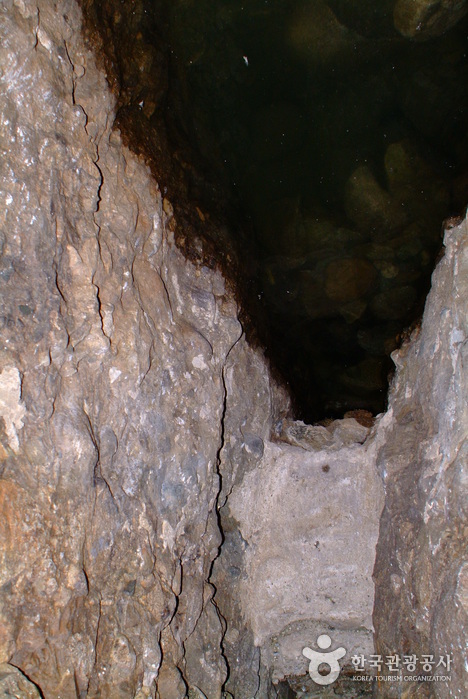
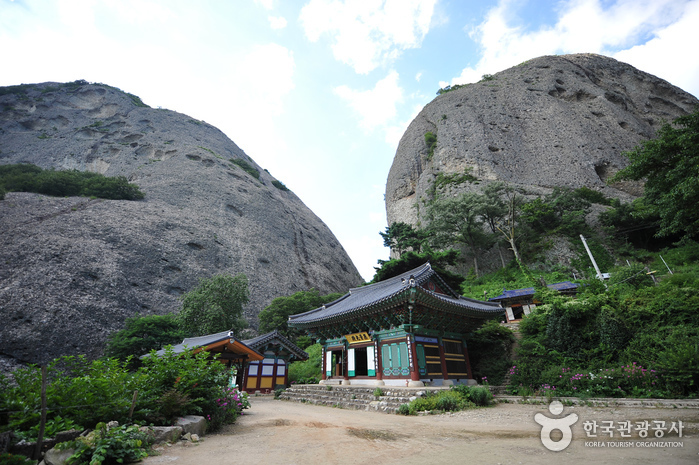
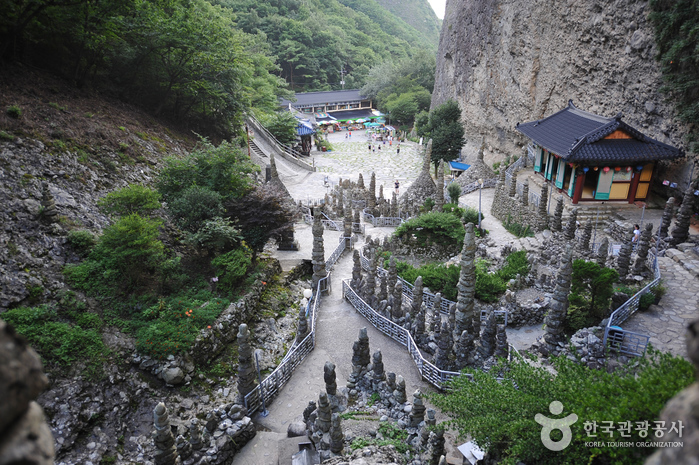

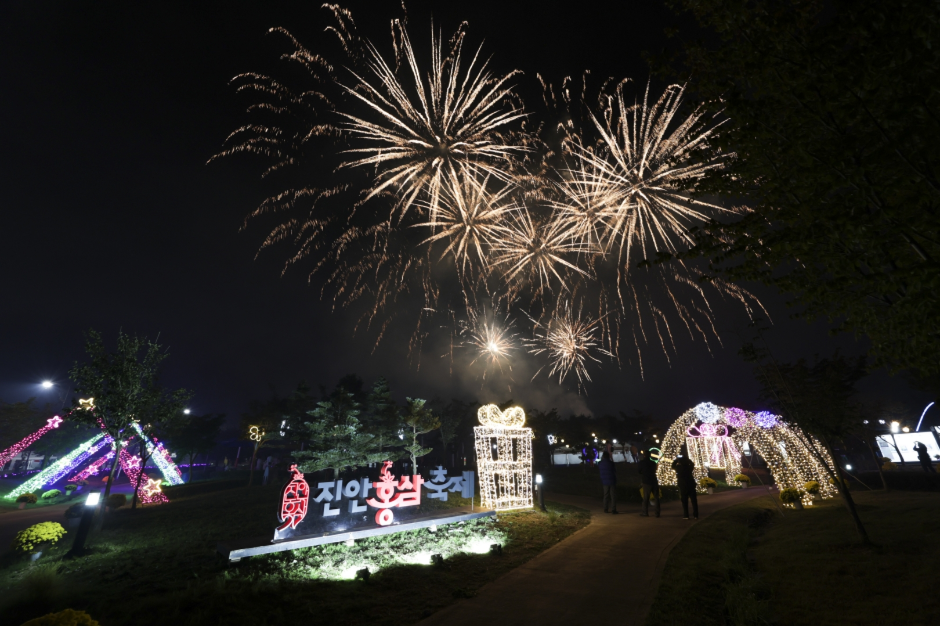
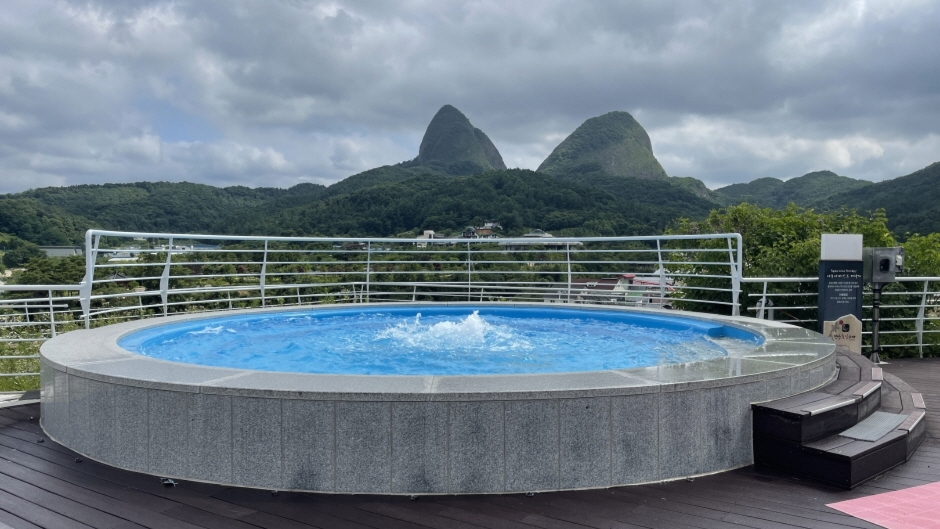
![Haneullae Deulkkot Village (하늘내들꽃마을 [녹색농촌체험])](http://tong.visitkorea.or.kr/cms/resource/19/2515519_image2_1.jpg)
 English
English
 한국어
한국어 日本語
日本語 中文(简体)
中文(简体) Deutsch
Deutsch Français
Français Español
Español Русский
Русский